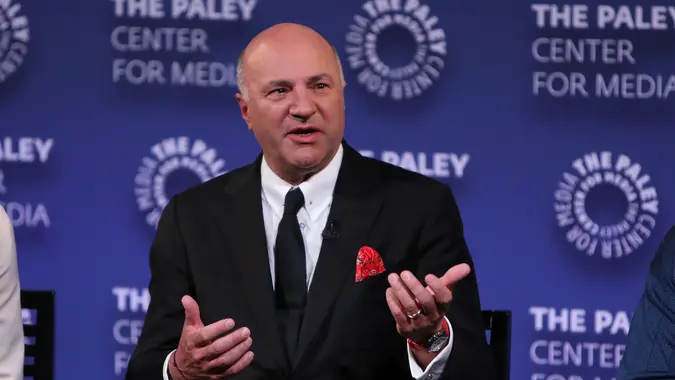I’m a Retirement Planner: 5 Key Signs for Gen X That Your Retirement Is on Track

Commitment to Our Readers
GOBankingRates' editorial team is committed to bringing you unbiased reviews and information. We use data-driven methodologies to evaluate financial products and services - our reviews and ratings are not influenced by advertisers. You can read more about our editorial guidelines and our products and services review methodology.

20 Years
Helping You Live Richer

Reviewed
by Experts

Trusted by
Millions of Readers
While most of Generation X isn’t in retirement yet, its members are on their way and will comprise the next biggest waves to do so after baby boomers.
Gen Xers are known for being a scrappy, can-do but often-overlooked generation who came of age before the internet and put their heads to the ground to get things done. Retirement may be one area that could slip through the cracks, however, for this sandwich generation that is busy caring for their parents and raising kids while also working.
For busy Gen Xers wondering if they are doing a good job planning for their own retirement, Patrick Sabol, a senior lead planner with Facet, explained five key signs that they are, in fact, on track.
You’re Planning for Your Money To Outlive You
Sabol is not a fan of blanket statements that suggest anyone needs to have a specific amount of money at retirement or at a certain age because it depends on your spending needs and habits. However, he suggested that a good goal for Gen Xers is to “make sure my money outlives me.”
That requires planning and often working with a financial advisor or retirement planner to run the numbers and figure it out. It means taking into account things like your health (and thus longevity) as well as your plans and your retirement income strategies.
You’re Maxing Out a Retirement Plan
The next biggest sign that Gen Xers are on track is that they are not only consistently contributing to a 401(k) or 403(b), employer sponsored plan, but maxing out the contribution limits (and catching any employer matching funds offered).
“Maxing out is a good way to say am I really on schedule or ahead of schedule, meaning that I am doing the IRS maximum limits,” Sabol explained.
For Gen Xers between the ages of 45 and 50, that is $23,500 for 2025, and $31,000 for those 50 and older (due to an additional $7,500 allowed in the form of a catch-up contribution).
You’re Lowering Your Taxable Income Through These Accounts
What these contributions also do is ultimately lower your taxable income, since a portion of the money that goes into a 401(k) or 403(b) is not subject to income tax, and it will “come off your top tax bracket,” Sabol said. You don’t pay taxes on it until you withdraw from the account in retirement.
He pointed out that statistically, on average, people make the most money they will ever make in the mid- to later stages of their careers. So, “Now Gen Xers are the ones who are making the most money they’re ever going to make in their career,” he said.
Thus, the 401(k) or 403(b) is the best tool they can use to save for retirement.
You Have Multiple Retirement Tax Buckets
Another key sign in Gen Xers who “are really on track to retire well,” Sabol said, is that they have they have multiple tax buckets.
“It means you have different accounts that are taxed differently,” he said. So these Gen Xers not only have a 401(k) or 403(b) with pretax money, they might also have a Roth IRA, a taxable brokerage account where they pay capital gains tax, which is a lower rate and a a health savings account (HSA).
“When I see people with those three buckets with balances in all those three buckets at retirement or near retirement, they’re going to have a great plan,” he said.
You Have a Health Savings Account
What makes an HSA for those who qualify a great sign is that it comes with “a triple tax benefit,” Sabol said. “You get a tax deduction for your contributions, your funds grow tax-free and you also have tax-free withdrawals if used for qualified medical care.”
Once you turn 65, which he called “the target retirement age,” that money can be used for some non-medical expenses. While you pay taxes on it if used for non-health related expenses, you don’t have the 10% penalty for early withdrawal.
While there are certainly other signs that you’re on track to a solid retirement, having these nailed down puts Gen Xers ahead of the retirement crowd.
 Written by
Written by  Edited by
Edited by 

























